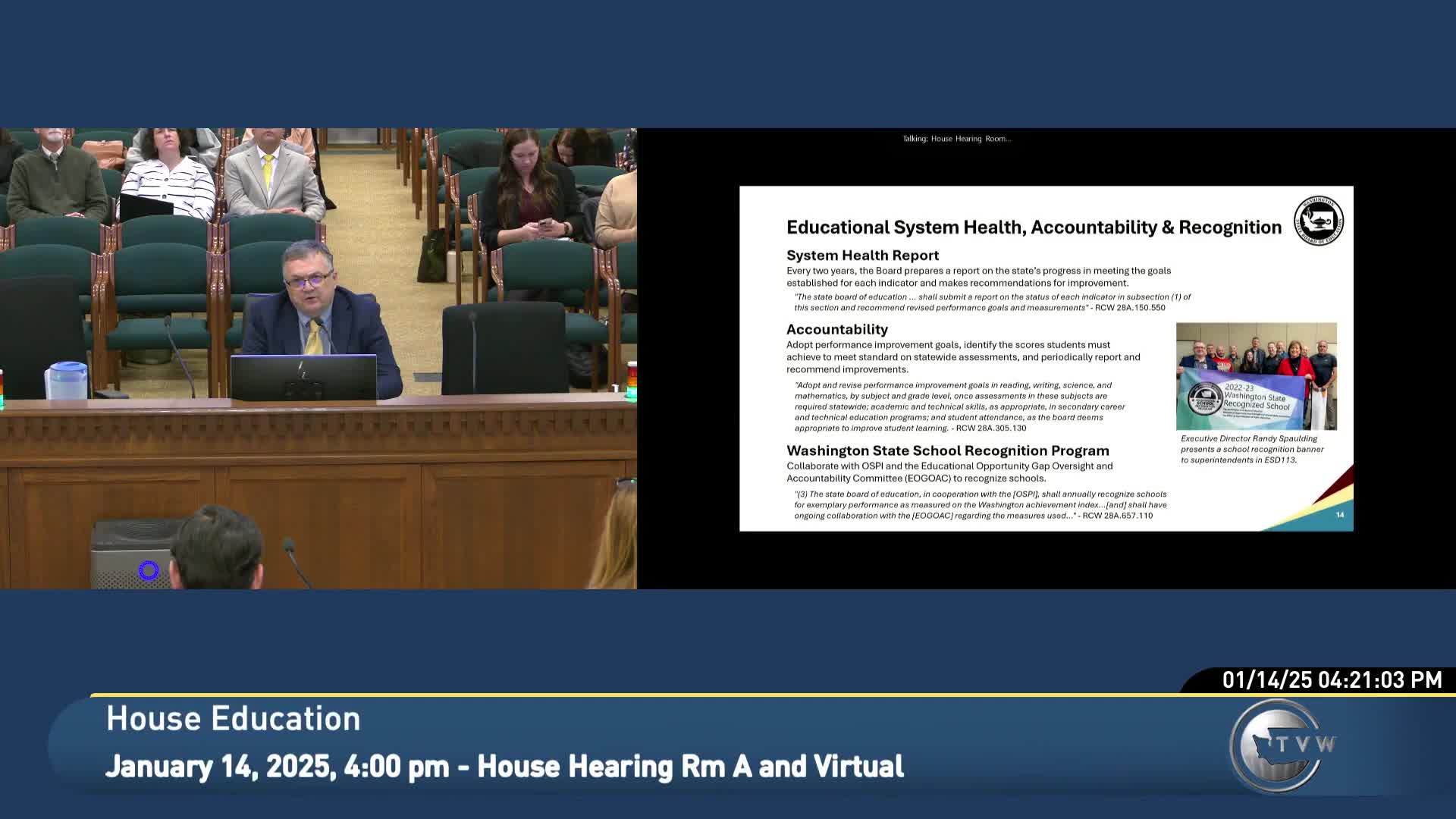JLARC: Utility tax credit for home energy assistance is small, declining and likely not an incentive
January 14, 2025 | Education, House of Representatives, Legislative Sessions, Washington
This article was created by AI summarizing key points discussed. AI makes mistakes, so for full details and context, please refer to the video of the full meeting. Please report any errors so we can fix them. Report an error »

The legislative auditor told the House Finance Committee that Washington’s public-utility tax credit for home energy assistance reimburses a small and declining portion of utilities’ low-income assistance and likely does not drive utilities to provide more assistance.
Pete Van Moorsil, JLARC staff, said the credit reimburses up to 50% of assistance utilities give to low-income customers and is capped at $2.5 million statewide per year. JLARC estimated beneficiary savings of roughly $5 million in the current period and found that utilities’ total energy-assistance payments increased 42% from 2018 to 2023 (from $53.6 million to $76.1 million), while the credit’s share of assistance declined from 4.7% to 3.3%.
Why it matters: JLARC concluded the credit likely does not accomplish its inferred objective — incentivizing utilities to provide more low-income assistance — because (1) the credit is capped and allocated among utilities by prior-year LIHEAP distributions, resulting in very small allocations for many utilities, and (2) statutory and regulatory changes since enactment (including CETA and a 2021 law requiring investor-owned utilities to offer low-income discounts) already require or broaden low-income assistance.
Details and committee discussion
- Allocation and use: The Department of Revenue allocates the $2.5 million cap among about 60 utilities proportional to federal LIHEAP dollars their customers receive; seven utilities received 78% of the allocation in the reviewed year. About 30 utilities claim the credit each year.
- JLARC findings: Utilities increased assistance 42% between 2018 and 2023, but the reimbursed share declined because the cap is fixed. Many utilities reported they do not alter assistance levels based on the credit. JLARC found about half of utilities that receive LIHEAP allocations do not claim the credit.
- Policy context: JLARC noted statutory changes including the Clean Energy Transformation Act (CETA) and 2021 Senate Bill 295 requiring investor-owned utilities to provide discounts and enabling cost recovery for assistance programs.
Committee questions
Representative Rammell asked whether JLARC examined the share of eligible households not receiving assistance; Van Moorsil said JLARC relied on the Department of Commerce’s Energy Assistance report for need and county-level energy-burden measures but could not match the tax-credit reimbursement directly to specific beneficiary households.
Department of Commerce position
JLARC reported that Commerce does not concur with continuing the credit; Commerce recommended terminating the preference and pursuing a comprehensive statewide approach to reduce low-income households’ energy burden. JLARC recommended the legislature clarify policy objectives and performance metrics if it retains the preference; it also recommended consulting Commerce to design changes to increase the credit’s effectiveness.
Ending
JLARC presented the audit for committee consideration; no formal action was taken during the hearing.
Pete Van Moorsil, JLARC staff, said the credit reimburses up to 50% of assistance utilities give to low-income customers and is capped at $2.5 million statewide per year. JLARC estimated beneficiary savings of roughly $5 million in the current period and found that utilities’ total energy-assistance payments increased 42% from 2018 to 2023 (from $53.6 million to $76.1 million), while the credit’s share of assistance declined from 4.7% to 3.3%.
Why it matters: JLARC concluded the credit likely does not accomplish its inferred objective — incentivizing utilities to provide more low-income assistance — because (1) the credit is capped and allocated among utilities by prior-year LIHEAP distributions, resulting in very small allocations for many utilities, and (2) statutory and regulatory changes since enactment (including CETA and a 2021 law requiring investor-owned utilities to offer low-income discounts) already require or broaden low-income assistance.
Details and committee discussion
- Allocation and use: The Department of Revenue allocates the $2.5 million cap among about 60 utilities proportional to federal LIHEAP dollars their customers receive; seven utilities received 78% of the allocation in the reviewed year. About 30 utilities claim the credit each year.
- JLARC findings: Utilities increased assistance 42% between 2018 and 2023, but the reimbursed share declined because the cap is fixed. Many utilities reported they do not alter assistance levels based on the credit. JLARC found about half of utilities that receive LIHEAP allocations do not claim the credit.
- Policy context: JLARC noted statutory changes including the Clean Energy Transformation Act (CETA) and 2021 Senate Bill 295 requiring investor-owned utilities to provide discounts and enabling cost recovery for assistance programs.
Committee questions
Representative Rammell asked whether JLARC examined the share of eligible households not receiving assistance; Van Moorsil said JLARC relied on the Department of Commerce’s Energy Assistance report for need and county-level energy-burden measures but could not match the tax-credit reimbursement directly to specific beneficiary households.
Department of Commerce position
JLARC reported that Commerce does not concur with continuing the credit; Commerce recommended terminating the preference and pursuing a comprehensive statewide approach to reduce low-income households’ energy burden. JLARC recommended the legislature clarify policy objectives and performance metrics if it retains the preference; it also recommended consulting Commerce to design changes to increase the credit’s effectiveness.
Ending
JLARC presented the audit for committee consideration; no formal action was taken during the hearing.
View full meeting
This article is based on a recent meeting—watch the full video and explore the complete transcript for deeper insights into the discussion.
View full meeting
